
The Natural Paradise of Cabo de Gata
Discover Cabo de Gata: Spain's hidden gem with volcanic landscapes, secluded beaches, and rich cultural heritage. Perfect for nature lovers and adventure seekers.
Cabo de Gata is a stunning natural park located in the southeast of Spain. Known for its wild coastline, crystal-clear waters, and secluded beaches, this destination offers a perfect escape for nature lovers and adventure seekers. The region is home to volcanic landscapes, rugged cliffs, and unique flora and fauna, making it a paradise for photographers and outdoor enthusiasts alike. One of the highlights of Cabo de Gata is its pristine beaches. From the famous Playa de los Genoveses to the hidden coves of Cala Enmedio, each beach offers a unique experience. Whether you're looking to relax on the sandy shores, snorkel in the clear waters, or explore the rock formations, there is something for everyone. The area is also rich in history and culture. The small fishing villages like San José and Agua Amarga provide a glimpse into traditional Spanish life. Visitors can enjoy delicious local cuisine, explore charming streets, and visit historical sites such as the Castillo de San Felipe. For those interested in wildlife, the salt flats of Las Salinas de Cabo de Gata are home to a variety of bird species, including flamingos. Cabo de Gata is a destination that offers a perfect blend of natural beauty, cultural richness, and outdoor activities. Whether you're hiking through its volcanic landscapes, diving in its marine reserves, or simply soaking in the serene environment, Cabo de Gata promises an unforgettable experience.
Local tips in Cabo de Gata
- Visit during the off-season (spring or fall) to avoid crowds and enjoy perfect weather.
- Rent a car to explore the remote beaches and villages at your own pace.
- Bring snorkeling gear to explore the underwater beauty of the marine reserves.
- Try the local seafood dishes in the fishing villages for an authentic culinary experience.
- Wear sturdy shoes for hiking and exploring the rugged terrain.
The Natural Paradise of Cabo de Gata
Cabo de Gata is a stunning natural park located in the southeast of Spain. Known for its wild coastline, crystal-clear waters, and secluded beaches, this destination offers a perfect escape for nature lovers and adventure seekers. The region is home to volcanic landscapes, rugged cliffs, and unique flora and fauna, making it a paradise for photographers and outdoor enthusiasts alike. One of the highlights of Cabo de Gata is its pristine beaches. From the famous Playa de los Genoveses to the hidden coves of Cala Enmedio, each beach offers a unique experience. Whether you're looking to relax on the sandy shores, snorkel in the clear waters, or explore the rock formations, there is something for everyone. The area is also rich in history and culture. The small fishing villages like San José and Agua Amarga provide a glimpse into traditional Spanish life. Visitors can enjoy delicious local cuisine, explore charming streets, and visit historical sites such as the Castillo de San Felipe. For those interested in wildlife, the salt flats of Las Salinas de Cabo de Gata are home to a variety of bird species, including flamingos. Cabo de Gata is a destination that offers a perfect blend of natural beauty, cultural richness, and outdoor activities. Whether you're hiking through its volcanic landscapes, diving in its marine reserves, or simply soaking in the serene environment, Cabo de Gata promises an unforgettable experience.
When is the best time to go to Cabo de Gata?
Iconic landmarks you can’t miss
Parque Natural del Cabo de Gata-Níjar
Explore the stunning natural beauty of Parque Natural del Cabo de Gata-Níjar, a diverse landscape perfect for outdoor adventures and relaxation.
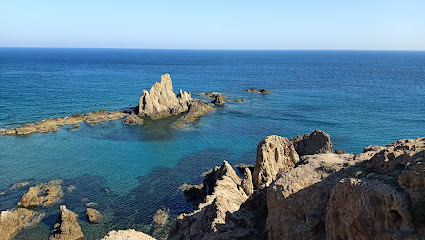
Faro de Cabo de Gata
Explore the breathtaking Faro de Cabo de Gata, a lighthouse surrounded by stunning landscapes in the Cabo de Gata-Nijar Natural Park.
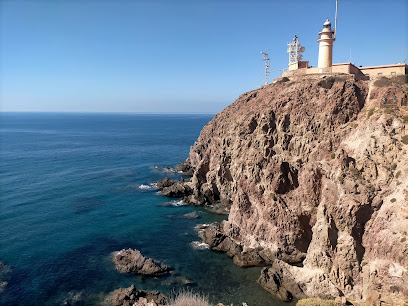
Viewpoint of La Amatista
Experience mesmerizing vistas and natural beauty at the Viewpoint of La Amatista in Parque Natural Cabo de Gata-Nijar, a highlight for every traveler.
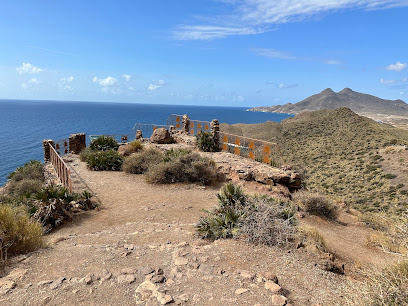
Cabo De Gata
Explore Cabo de Gata, a stunning nature preserve in Almería, Spain, known for its dramatic landscapes, pristine beaches, and rich biodiversity.

Cala Rajá
Discover the serene beauty of Cala Rajá in Cabo de Gata, a stunning beach destination perfect for relaxation and adventure amidst nature.
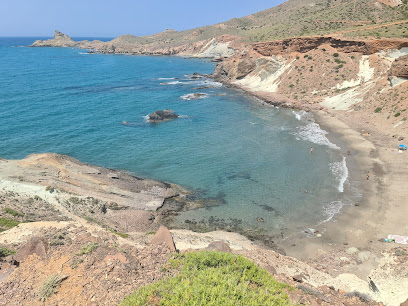
Cala de la Media Luna
Discover the serene beauty of Cala de la Media Luna, a stunning crescent beach in Cabo de Gata, perfect for swimming, snorkeling, and relaxing amidst nature.
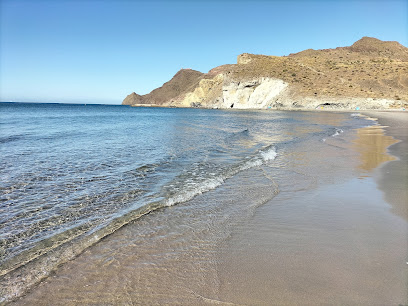
Cape Town Fund
Experience the breathtaking beauty of Almería's coast with guided boat tours and nature exploration at Cape Town Fund.
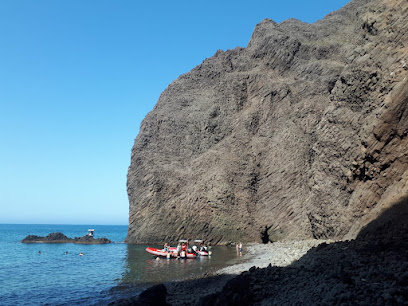
Cala Carbón
Experience the natural beauty and tranquility of Cala Carbón, a hidden beach gem in Cabo de Gata National Park, perfect for relaxation and adventure.
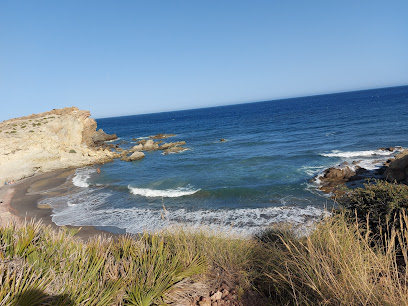
Las Salinas de Cabo de Gata
Experience the natural wonder of Las Salinas de Cabo de Gata, a serene preserve in Almería, Spain, perfect for birdwatching and outdoor exploration.
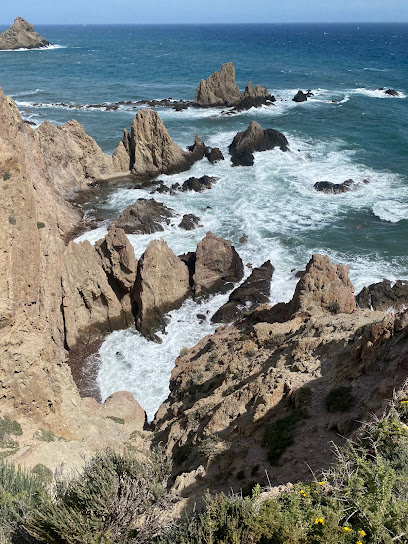
Cabo de Gata (Almeria)
Explore the breathtaking landscapes and tranquil beaches of Cabo de Gata, a premier nature preserve in Almeria, Spain, perfect for outdoor adventures.

Castillo de San Pedro
Explore the Castillo de San Pedro, a historic fortress in Níjar, Almería, offering stunning views and rich tales of Spain's past.
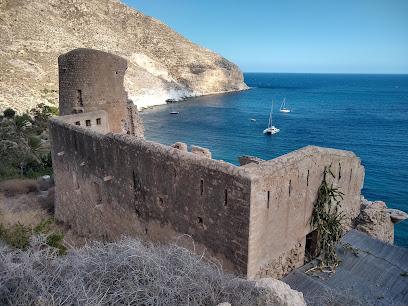
Playa San Miguel de Cabo de Gata
Experience the serene beauty of Playa San Miguel de Cabo de Gata, where golden sands meet crystal-clear waters in a stunning natural park setting.

Cabo de Gata - Pueblo
Explore the picturesque village of Cabo de Gata - Pueblo, your gateway to stunning beaches and nature in Almería's breathtaking Cabo de Gata-Níjar Natural Park.
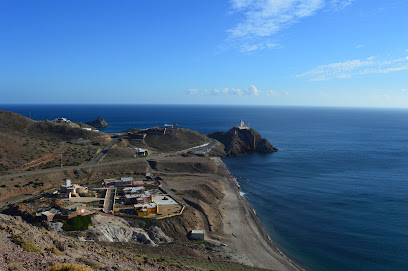
degata.com
Discover the breathtaking landscapes, diverse wildlife, and adventure opportunities at Las Negras National Park, a true gem of the Almerian coast.
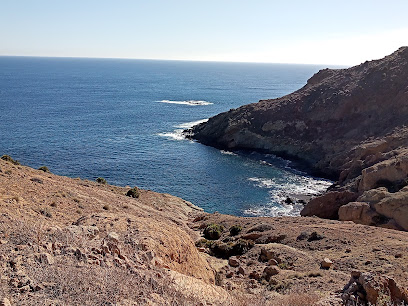
Unmissable attractions to see
Castillo de Santa Ana
Explore the historic Castillo de Santa Ana in Roquetas de Mar, a fortress with stunning views and engaging cultural exhibits.
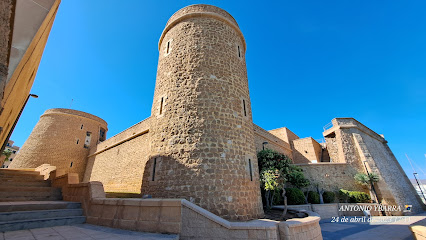
El Palmeral
Discover the serene beauty of El Palmeral, a lush urban park in Almería perfect for relaxation, family outings, and breathtaking Mediterranean views.
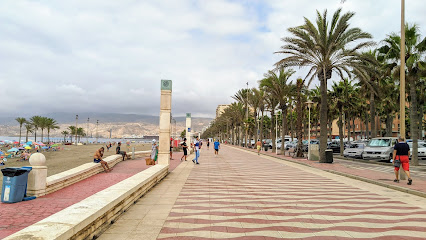
Plaza del mar
Discover the captivating beauty of Plaza del Mar, a vibrant coastal attraction in Almería, perfect for leisure, culture, and stunning Mediterranean views.
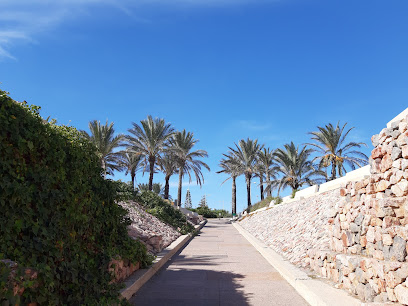
Mariposario de Nijar
Discover the Mariposario de Nijar, a stunning butterfly sanctuary in Almería, Spain, where nature's beauty comes to life in vibrant colors.
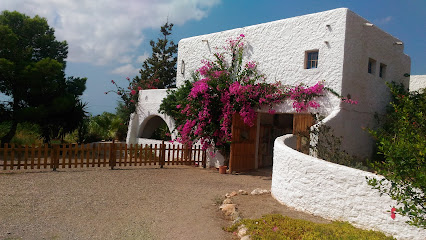
Cala Rajá
Discover the enchanting beauty of Cala Rajá in Parque Natural Cabo de Gata, a serene beach paradise perfect for relaxation and adventure.
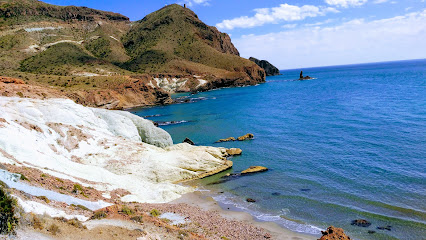
Mirador Las Salinas
Discover the breathtaking views and vibrant birdlife at Mirador Las Salinas, a must-visit destination for nature lovers in Almería.
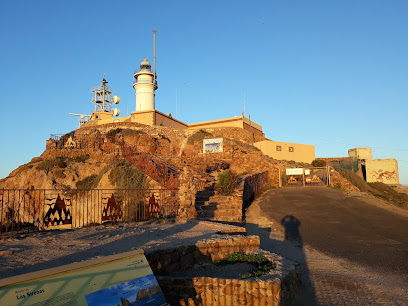
Cala de la Media Luna
Discover the tranquil beauty of Cala de la Media Luna, a breathtaking beach in Cabo de Gata, renowned for its unique crescent shape and natural surroundings.
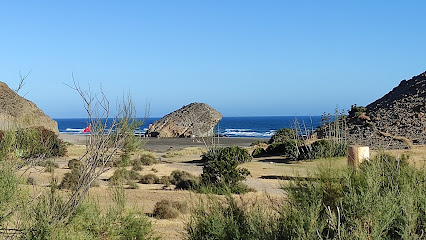
Pirulico’s Tower
Immerse yourself in history at Pirulico’s Tower, a stunning historical landmark in Almería, where breathtaking views and rich culture await.
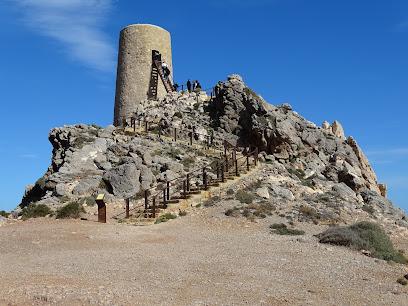
Cortijo del Fraile
Discover the captivating history and stunning landscapes of Cortijo del Fraile, a unique historical landmark in Almería, Spain.
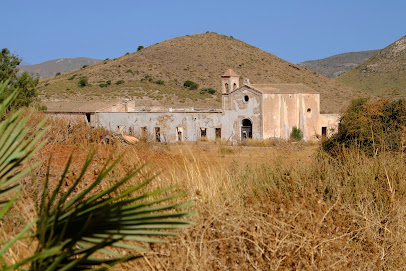
Algarrobico Beach
Experience the sun-kissed shores and vibrant atmosphere of Algarrobico Beach, your ultimate Mediterranean getaway.

St. Philip Castle
Explore the historical charm and stunning vistas of St. Philip Castle in Cabo de Gata Natural Park, a perfect blend of culture and nature.
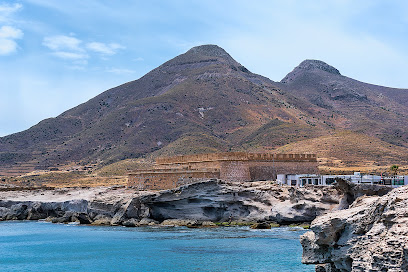
Cala de Los Toros
Explore the stunning Cala de Los Toros in Parque Natural Cabo de Gata-Nijar, a tranquil beach paradise with crystal-clear waters and breathtaking landscapes.
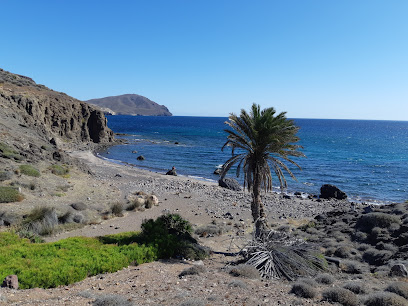
Cala Carbón
Discover the serene beauty of Cala Carbón, a hidden beach gem in Cabo de Gata-Nijar Natural Park, perfect for relaxation and adventure.
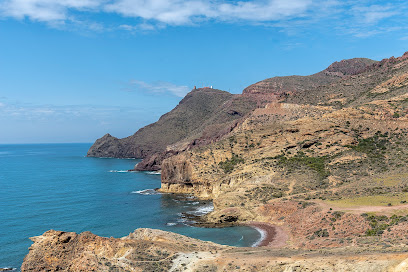
Las Salinas de Cabo de Gata
Discover Las Salinas de Cabo de Gata, a stunning nature preserve in Almería, Spain, featuring breathtaking landscapes and rich wildlife perfect for nature lovers.

Chiringuito Macenas
Discover the flavors of the Mediterranean at Chiringuito Macenas, a beachside restaurant in Mojácar, offering fresh seafood and breathtaking ocean views.
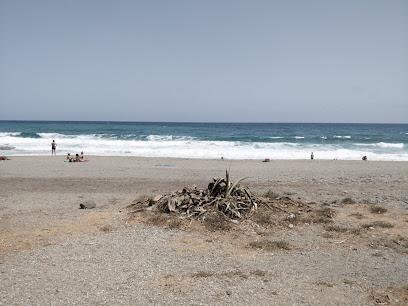
Essential places to dine
Chiringuito Restaurante Chiri-Bus
Experience authentic Mediterranean flavors at Chiringuito Restaurante Chiri-Bus in beautiful Cabo de Gata, Almería.

Restaurante Goleta Cabo de Gata
Experience authentic Mediterranean cuisine at Restaurante Goleta Cabo de Gata with stunning coastal views and delightful local flavors.
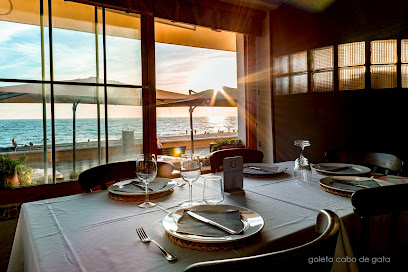
Restaurante El Barquero
Discover the authentic taste of Andalusia at Restaurante El Barquero in Níjar – where delicious tapas meet refreshing cider.
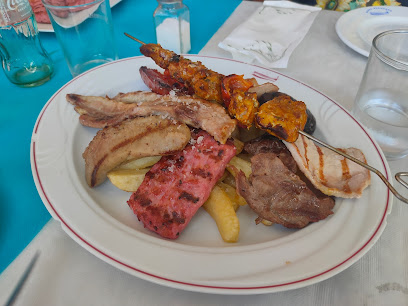
Restaurante Mediterráneo Cabo de Gata
Experience authentic Mediterranean cuisine at Restaurante Mediterráneo Cabo de Gata with breathtaking coastal views and a welcoming atmosphere.
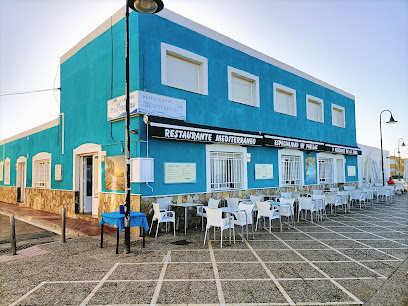
Restaurante El Parque
Discover authentic Mediterranean flavors at Restaurante El Parque in beautiful Cabo de Gata—where local ingredients meet traditional Spanish cuisine.
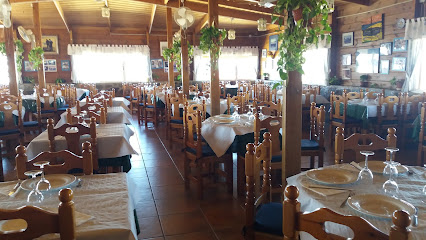
El Faro
Experience exquisite Mediterranean dining at El Faro, where stunning coastal views meet authentic local flavors.
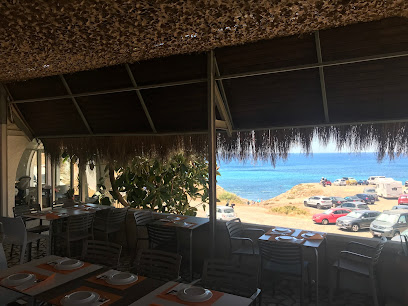
Chiringuito sonia y boni
Discover authentic Andalusian cuisine at Chiringuito Sonia y Boni in Cabo de Gata—where delicious tapas meet stunning seaside views.

Bar Manais
Discover authentic Mediterranean flavors at Bar Manais in Níjar – where every dish tells a story.
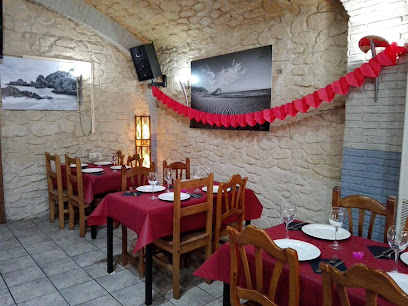
Restaurante El Naranjero
Experience authentic Mediterranean flavors at Restaurante El Naranjero in Cabo de Gata - where every meal tells a story.
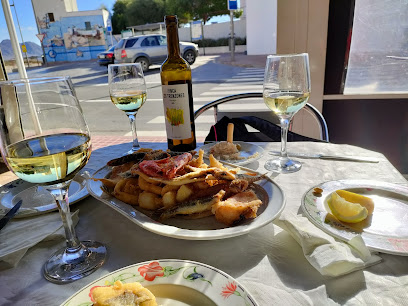
Café Bar NO LO SÉ
Experience local flavors and vibrant atmosphere at Café Bar NO LO SÉ in beautiful Cabo de Gata.
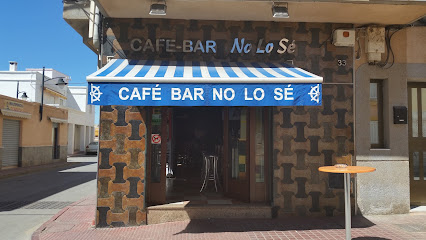
Restaurante Hotel Blanca Brisa Cabo de Gata
Experience authentic local cuisine amidst breathtaking views at Restaurante Hotel Blanca Brisa in Cabo de Gata.
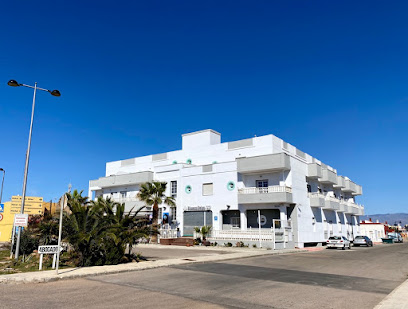
Bar El Cabo
Discover Bar El Cabo: A charming bar in Cabo de Gata offering delicious local cuisine in an inviting atmosphere.
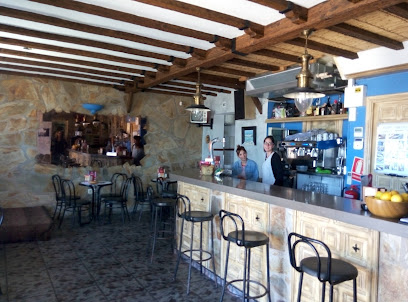
Kala Plaza
Experience affordable dining at Kala Plaza, where local flavors meet charming ambiance in Cabo de Gata.
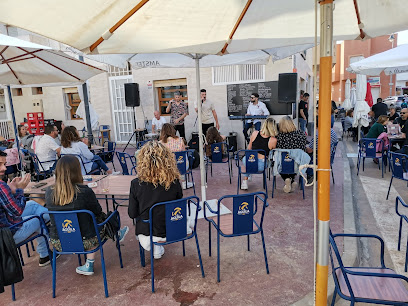
Chiringuito El Charco
Experience authentic coastal dining at Chiringuito El Charco in Almería's stunning Cabo de Gata-Níjar Natural Park.
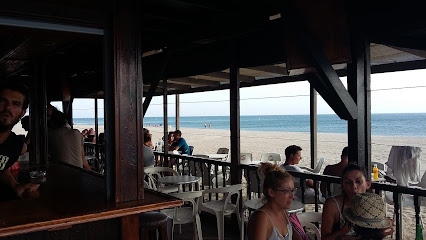
La Raspita Bar
Experience authentic Mediterranean flavors at La Raspita Bar in Cabo de Gata - where good food meets great company.
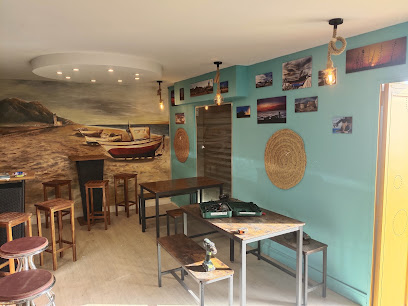
Markets, malls and hidden boutiques
Spar el barquero
Discover the flavors of Níjar at Spar el Barquero, a well-stocked grocery store offering local produce and international favorites for every traveler’s needs.
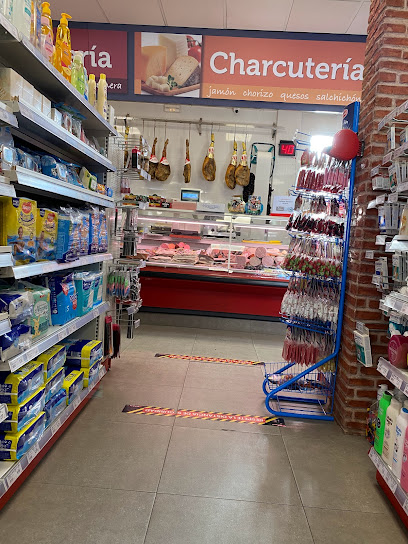
MERCADO MUNICIPAL DE CABO DE GATA
Experience the essence of Andalusia at Mercado Municipal de Cabo de Gata, where fresh food, local culture, and vibrant atmosphere come together.
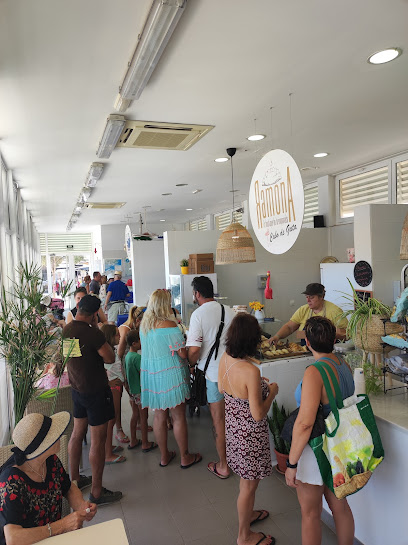
La Tienda de los Milagros
Discover exquisite handcrafted pottery at La Tienda de los Milagros in Níjar, where artistry meets tradition in every piece.
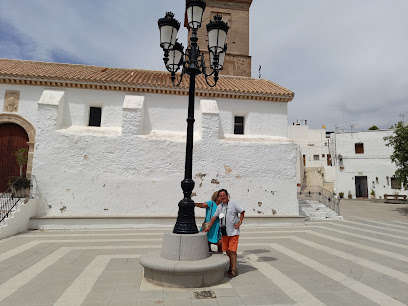
Covirán 10 Loli
Experience local flavors and convenience at Covirán 10 Loli, the go-to supermarket in Cabo de Gata for fresh produce and essential goods.
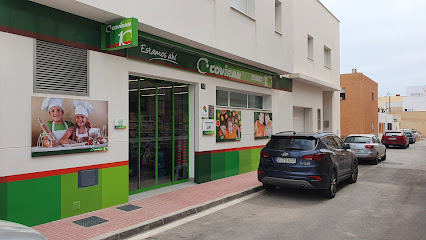
ASADOR - PIZZERÍA LA MACARENA
Experience the best of Italian flavors at Asador - Pizzería La Macarena in Cabo de Gata, where delicious pizzas and local dishes await.
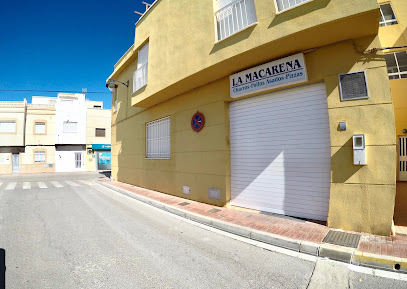
Droguería Ferretería Juan Matías
Discover the local charm of Droguería Ferretería Juan Matías, a unique hardware store in Cabo de Gata, perfect for all your DIY needs.
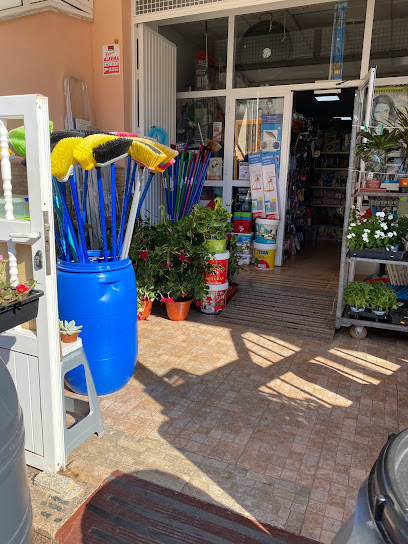
El Arrecife - Panadería & Croissantería
Discover the sweetness of El Arrecife Bakery in Cabo de Gata, a paradise for pastry lovers with freshly baked delights.
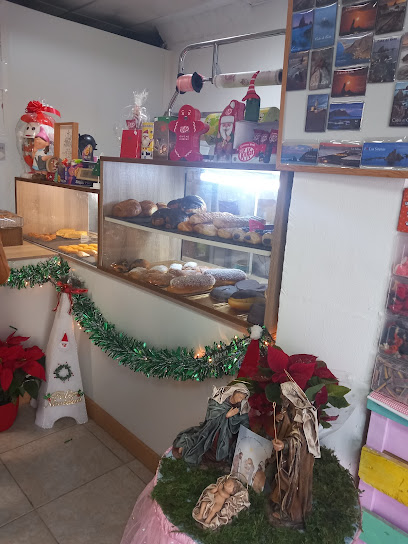
Supermercado El Molino
Explore authentic Spanish flavors at Supermercado El Molino, your go-to grocery store in Cabo de Gata for fresh produce and local specialties.
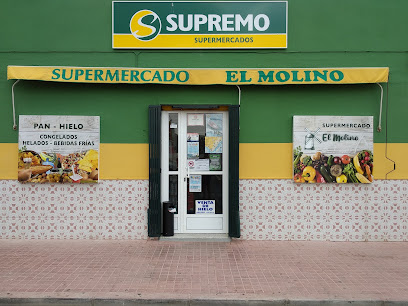
Supermercado Márquez
Discover the local flavors of Cabo de Gata at Supermercado Márquez, your go-to supermarket for fresh produce and regional delicacies.
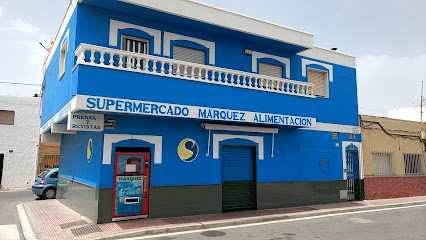
Bar El Rompeolas
Experience the vibrant blend of hairdressing and youth fashion at Bar El Rompeolas in scenic Cabo de Gata, the perfect stop for tourists.
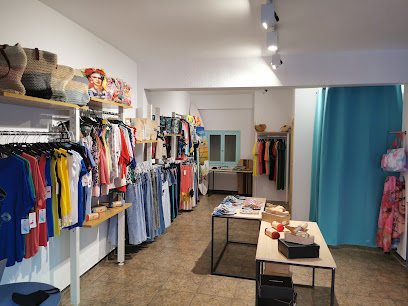
Estanco Cabo de Gata
Discover the charm of Estanco Cabo de Gata, a tobacco shop that reflects the rich culture and local lifestyle of Cabo de Gata.
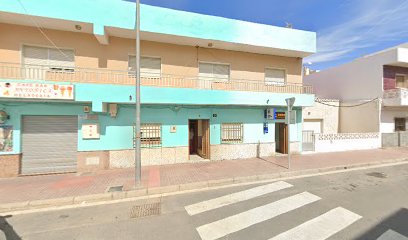
Don Nicolás Martínez Sola
Discover Don Nicolás Martínez Sola in Cabo de Gata, your trusted pharmacy for health essentials and personalized service in the heart of Almería.
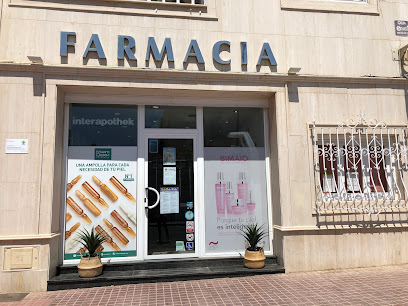
La Puerta Azul
Discover unique handmade crafts and local artistry at La Puerta Azul, a vibrant craft store in San José, Almería, perfect for finding the ideal souvenir.
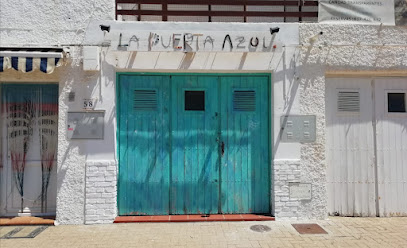
LA GATA DEL CABO
Discover unique Andalusian fashion at La Gata del Cabo, a charming clothing store in San José, Almería, perfect for tourists seeking local style.
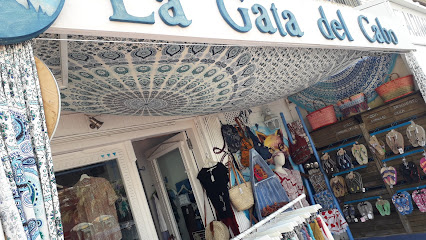
Magari Oficial
Explore the latest women's fashion and accessories at Magari Oficial, a stylish boutique in Retamar, Almería, perfect for the modern traveler.

Essential bars & hidden hideouts
Maricastaña
Experience Maricastaña, a vibrant bar and restaurant in Almería, offering delicious breakfasts and crafted cocktails in a lively atmosphere.
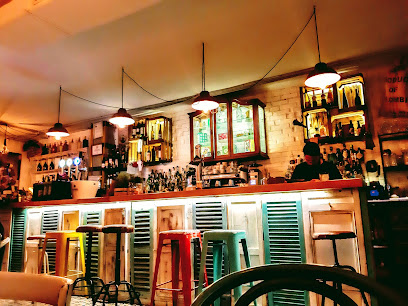
Chiringuito Restaurante Chiri-Bus
Experience Mediterranean delights at Chiringuito Restaurante Chiri-Bus, where stunning beach views meet delicious grill cuisine in Cabo de Gata.
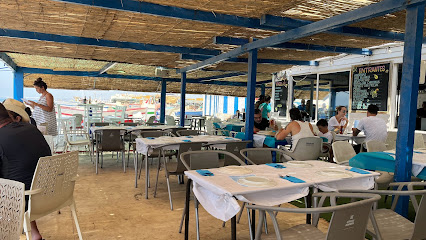
Restaurante Goleta Cabo de Gata
Discover the true essence of Mediterranean cuisine at Restaurante Goleta Cabo de Gata, where every meal is a celebration of local flavors and breathtaking views.
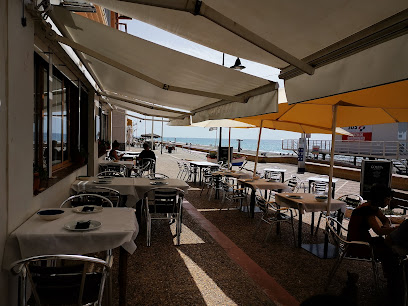
Restaurante El Barquero
Experience authentic tapas and refreshing cider at Restaurante El Barquero in the beautiful Níjar region of Almería, Spain.
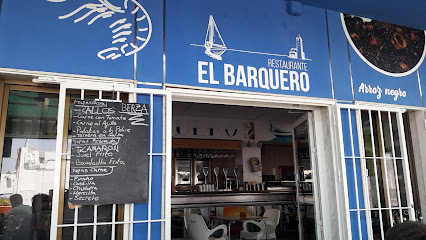
Restaurante Mediterráneo Cabo de Gata
Experience the vibrant flavors of Mediterranean cuisine at Restaurante Mediterráneo Cabo de Gata, a culinary haven by the sea.
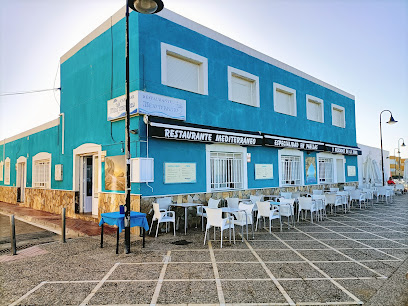
Abordaje Gastrobar
Experience the vibrant taste of Almería at Abordaje Gastrobar, where delicious tapas and local wines meet a lively atmosphere.
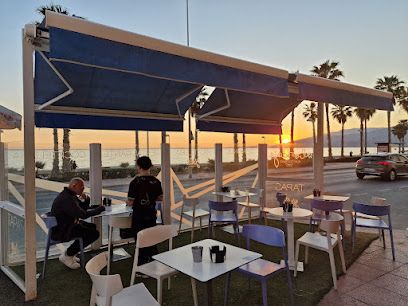
El Faro
Experience exquisite Mediterranean flavors and stunning coastal views at El Faro, the perfect dining destination in Cabo de Gata.
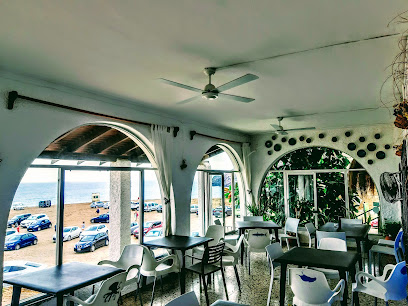
Chiringuito sonia y boni
Experience authentic Andalusian beach culture at Chiringuito Sonia y Boni, with delicious tapas and stunning ocean views in Cabo de Gata.
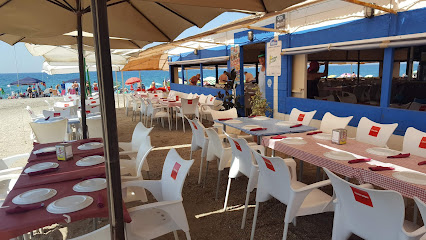
Restaurante El Naranjero
Savor the authentic flavors of Mediterranean cuisine at Restaurante El Naranjero, where every meal is a celebration of Cabo de Gata's culinary heritage.
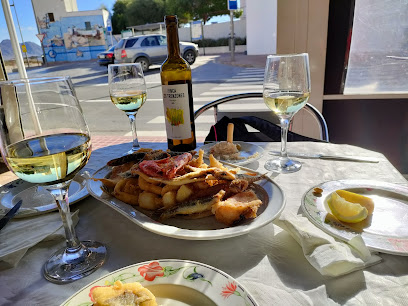
Café Bar NO LO SÉ
Discover the vibrant spirit of Cabo de Gata at Café Bar NO LO SÉ, where local flavors and a friendly atmosphere await.
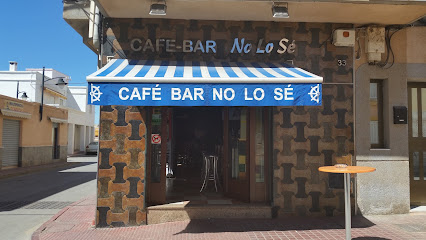
Bar El Cabo
Explore Bar El Cabo in Cabo de Gata for an authentic taste of Andalusian cuisine and a vibrant atmosphere that locals love.
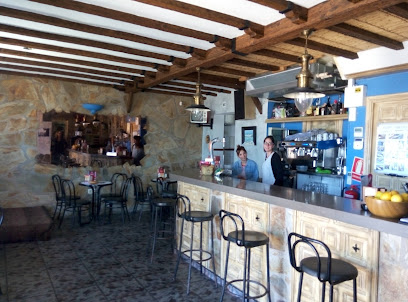
Restaurante Hotel Blanca Brisa Cabo de Gata
Experience the exquisite flavors of the Mediterranean at Restaurante Hotel Blanca Brisa in Cabo de Gata, where every meal is a celebration of local cuisine.
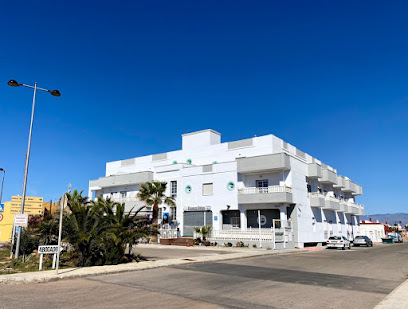
Cafe Bar La Almadraba
Experience the authentic taste of Almería at Café Bar La Almadraba, where grilled delights and traditional tapas await you in a picturesque coastal setting.

Bar El Bahía
Discover the culinary delights at Bar El Bahía in Cabo de Gata, where fresh seafood tapas meet a warm, welcoming atmosphere.
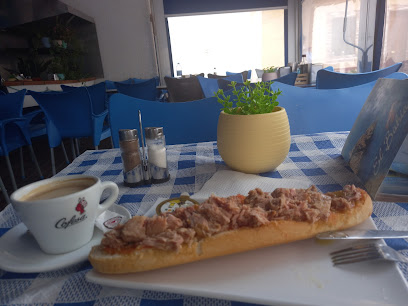
Chiringuito El Charco
Experience the vibrant flavors and stunning views at Chiringuito El Charco, a charming stand bar in the breathtaking Cabo de Gata-Níjar Natural Park.
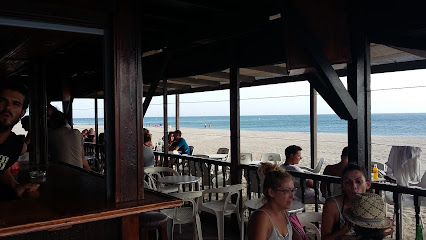
Local Phrases about Cabo de Gata
-
- HelloHola
[oh-lah] - GoodbyeAdiós
[ah-thyohs] - YesSí
[see] - NoNo
[noh] - Please/You're welcomePor favor/ De nada
[por fah-vohr/ de nah-dah] - Thank youGracias
[grah-thyahs] - Excuse me/SorryPerdón/Lo siento
[pehr-dohn/loh syehn-toh] - How are you?¿Cómo estás?
[koh-moh ehs-tahs] - Fine. And you?Bien. ¿Y tú?
[byehn. ee too] - Do you speak English?¿Hablas inglés?
[ah-blahs een-glehs] - I don't understandNo entiendo
[noh ehn-tyen-doh]
- HelloHola
-
- I'd like to see the menu, pleaseMe gustaría ver la carta, por favor
[meh goos-tah-ree-ah behr lah kahr-tah, por fah-vohr] - I don't eat meatNo como carne
[noh koh-moh kahr-neh] - Cheers!¡Salud!
[sah-lood] - I would like to pay, pleaseMe gustaría pagar, por favor
[meh goos-tah-ree-ah pah-gahr, por fah-vohr]
- I'd like to see the menu, pleaseMe gustaría ver la carta, por favor
-
- Help!¡Ayuda!
[ah-yoo-dah] - Go away!¡Vete!
[veh-teh] - Call the Police!¡Llama a la Policía!
[yah-mah ah lah poh-lee-see-ah] - Call a doctor!¡Llama a un médico!
[yah-mah ah oon meh-dee-koh] - I'm lostEstoy perdido/a
[ehs-toy pehr-dee-doh/dah] - I'm illEstoy enfermo/a
[ehs-toy ehn-fehr-moh/dah]
- Help!¡Ayuda!
-
- I'd like to buy...Me gustaría comprar...
[meh goos-tah-ree-ah kohm-prahr...] - I'm just lookingSolo estoy mirando
[soh-loh ehs-toy meer-ahn-doh] - How much is it?¿Cuánto cuesta?
[kwan-toh kwes-tah] - That's too expensiveEs demasiado caro
[ehs deh-mah-syah-doh kah-roh] - Can you lower the price?¿Puedes rebajar el precio?
[pweh-dehs reh-bah-hahr ehl pree-syoh]
- I'd like to buy...Me gustaría comprar...
-
- What time is it?¿Qué hora es?
[keh oh-rah ehs] - It's one o'clockEs la una
[ehs lah oo-nah] - Half past (10)Y media (10)
[ee meh-dee-ah (deez)] - MorningMañana
[mah-nyah-nah] - AfternoonTarde
[tahr-deh] - EveningNoche
[noh-cheh] - YesterdayAyer
[ah-yehr] - TodayHoy
[oy] - TomorrowMañana
[mah-nyah-nah] - 1Uno
[oo-noh] - 2Dos
[dohs] - 3Tres
[trehs] - 4Cuatro
[kwah-troh] - 5Cinco
[theen-koh] - 6Seis
[says] - 7Siete
[syeh-teh] - 8Ocho
[oh-choh] - 9Nueve
[nweh-veh] - 10Diez
[dyehth]
- What time is it?¿Qué hora es?
-
- Where's a/the...?¿Dónde está...?
[dohn-deh ehs-tah] - What's the address?¿Cuál es la dirección?
[kwal ehs lah dee-rek-syohn] - Can you show me (on the map)?¿Puedes enseñarme (en el mapa)?
[pweh-dehs ehn-seh-nyahr-meh (ehn ehl mah-pah)] - When's the next (bus)?¿Cuándo es el próximo (autobús)?
[kwan-doh ehs ehl proh-ksee-moh (ow-toh-boos)] - A ticket (to ....)Un billete (a ....)
[oon bee-yeh-teh (ah ....)]
- Where's a/the...?¿Dónde está...?
History of Cabo de Gata
-
Cabo de Gata's strategic location in the Mediterranean made it an attractive spot for ancient civilizations. The Phoenicians, known for their seafaring skills, were among the first to establish trade routes in the area around the 8th century BCE. They were followed by the Carthaginians, who used Cabo de Gata as a critical point for their expansive maritime trade network. Archaeological findings, such as amphorae and other artifacts, attest to their presence in the region.
-
In 206 BCE, the Romans wrested control of the Iberian Peninsula from the Carthaginians during the Second Punic War. Cabo de Gata became part of the Roman province of Hispania, serving as a vital waypoint for ships traveling across the Mediterranean. The Romans exploited the region's natural resources, particularly salt, which was harvested from saline marshes and used for food preservation and trade. Remnants of Roman roads and villas can still be found in the area.
-
The 8th century CE saw the arrival of the Moors, who brought significant changes to Cabo de Gata. Under Islamic rule, the area flourished culturally and economically. The Moors introduced advanced agricultural techniques, including the construction of intricate irrigation systems. The name 'Cabo de Gata' is believed to derive from the Arabic 'Qabṭan,' reflecting its historical roots during this period. The fortress of Alcazaba in nearby Almería stands as a testament to the region's Islamic heritage.
-
During the 16th and 17th centuries, Cabo de Gata faced numerous pirate raids, primarily from North African corsairs. These attacks prompted the construction of defensive structures along the coastline, including watchtowers and fortresses. The Torre de San Miguel and the Castillo de San Felipe are notable examples of these fortifications, built to protect the local population and deter pirate invasions.
-
The discovery of rich mineral deposits in the 19th century spurred a mining boom in Cabo de Gata. The region became a hub for the extraction of silver, lead, and other minerals. This period of industrial activity brought economic prosperity and an influx of workers, transforming the landscape with mining infrastructure. The ruins of mining facilities, such as the Rodalquilar Gold Mine, serve as historical markers of this era.
-
In 1987, Cabo de Gata-Níjar Natural Park was established to protect the region's unique landscapes and biodiversity. This marked a shift towards conservation and sustainable tourism, preserving the area's natural beauty and cultural heritage. The park encompasses over 45,000 hectares of land and sea, featuring volcanic rock formations, pristine beaches, and diverse ecosystems. It has since become a popular destination for eco-tourists and nature enthusiasts.
Cabo de Gata Essentials
-
Cabo de Gata is located in the southeastern corner of Spain, in the province of Almería. The nearest major airport is Almería Airport (LEI), approximately 40 kilometers away. You can also fly into Málaga Airport (AGP) and take a bus or train to Almería. From Almería, you can rent a car or take a bus to Cabo de Gata. The area is also accessible by car from other major Spanish cities via the A-7 motorway.
-
Once in Cabo de Gata, the most convenient way to explore the area is by car, as public transportation options are limited. Renting a car allows you to visit the various beaches, villages, and natural parks at your own pace. Alternatively, you can use local buses to travel between Almería and the smaller towns within the Cabo de Gata-Níjar Natural Park. Bicycles and scooters are also popular for short-distance travel within the park.
-
The official currency in Spain is the Euro (EUR). Credit cards are widely accepted in hotels, restaurants, and shops, but it is advisable to carry some cash, especially in smaller establishments and rural areas. ATMs are available in the larger towns within the Cabo de Gata area, such as San José and Níjar. It's recommended to withdraw sufficient cash in Almería before heading to more remote locations.
-
Cabo de Gata is generally a safe destination for tourists. However, as with any travel destination, it is important to take standard precautions. Avoid leaving valuables unattended on the beach and be cautious in crowded areas. There are no specific high-crime areas targeting tourists, but it’s always best to stay vigilant and aware of your surroundings, especially at night.
-
In case of an emergency, dial 112 for immediate assistance. This number connects you to police, medical services, and fire departments. The nearest hospital is Torrecárdenas Hospital in Almería, which is equipped to handle medical emergencies. There are also smaller medical centers in towns like San José and Níjar. Make sure you have travel insurance that covers medical emergencies and bring any necessary medications with you.
-
Fashion: Do dress comfortably and appropriately for the beach and outdoor activities. Lightweight clothing and sun protection are essential. Avoid overly revealing clothing when visiting villages and religious sites. Religion: Do respect local customs and traditions. While Cabo de Gata is not particularly religious, showing respect at religious sites is appreciated. Public Transport: Do be respectful and considerate of others. Don't expect frequent public transport, especially in remote areas. Greetings: Do greet people with a friendly 'Hola' or 'Buenos días' when entering shops or restaurants. A handshake is common for formal introductions. Eating & Drinking: Do try local seafood and traditional dishes like 'caldero.' Don’t rush meals; dining is a social experience here. Accept food and drink offerings graciously.
-
To experience Cabo de Gata like a local, visit the local markets where you can buy fresh produce and artisanal products. Engage with the locals, who are often friendly and eager to share stories about the region. Don’t miss the chance to explore the natural beauty of the Cabo de Gata-Níjar Natural Park, including secluded beaches like Playa de los Muertos and Playa de los Genoveses. For a unique experience, take a guided tour of the volcanic landscapes and marine reserves. Visiting the picturesque white-washed villages such as Rodalquilar and Las Negras will also give you a feel of the local culture.
Trending Landmarks in Cabo de Gata
Nearby Cities to Cabo de Gata
-
Things To Do in Murcia
-
Things To Do in Oran
-
Things To Do in Málaga
-
Things To Do in Tlemcen
-
Things To Do in Alicante
-
Things To Do in Oujda
-
Things To Do in Ronda
-
Things To Do in Catalan Bay
-
Things To Do in Moorish Castle
-
Things To Do in St. Michael's Cave
-
Things To Do in Casemates Square
-
Things To Do in Gorham's Cave Complex
-
Things To Do in Gibraltar
-
Things To Do in Main Street
-
Things To Do in Alameda Botanic Gardens












